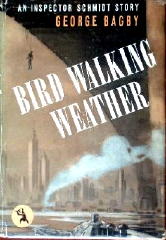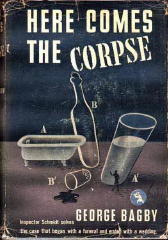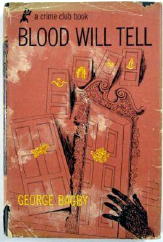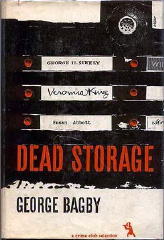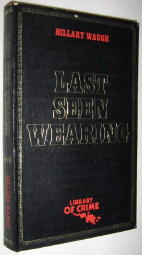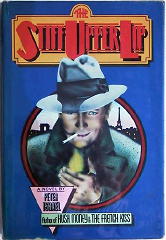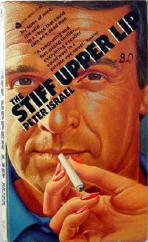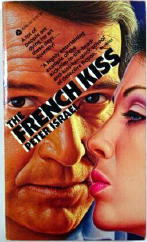Wed 7 Jan 2009
Archived Review: RICHARD & FRANCES LOCKRIDGE – Murder Within Murder.
Posted by Steve under Authors , Reviews[2] Comments
RICHARD & FRANCES LOCKRIDGE – Murder Within Murder.

Pocket Books, reprint paperback; 1st printing, July 1982. Hardcover edition: J. B. Lippincott, 1946. Hardcover reprint: Detective Book Club [3-in-1 edition], February 1946. Other paperback reprints: Dell 229 [mapback], 1948; Pyramid, October 1965. Trade paperback: Perennial, July 1994.
Based on information obtained from Al Hubin’s Crime Fiction III, this is the 10th of the multi-entertaining series of Mr. & Mrs. North detective novels. There were 26 in all, appearing between 1940 and 1963. When his wife Frances died, Richard Lockridge continued writing for quite a while, but that’s when the curtain fell for the Norths, whose last appearance was Murder by the Book in 1963.
I’m only guessing, but it always seemed to me that the character of Pamela North, the lady with the charmingly and disconcertingly chaotic thought processes, died when Frances did. She was either Pam’s creator or inspiration, or more than likely both, and when she left us, Mr. and Mrs. North went with her.
And while I’m digressing, one thing more. Here’s something’s that always puzzled me. The North books were immensely popular, or so it’s my impression, but they never seemed to be very successful in paperback. Compared with the way the Perry Mason books sold, for example, the adventures of the Norths were left in the dust.

Even though there was a long-running radio series chronicling their adventures, and later a TV series, many of the books were never published in softcover. If it weren’t for the Dollar Mystery Guild, I’m sure I wouldn’t have been able to read each and every one when they came out, and I doubt that I was the only one.
Pressed to describe Pamela North to someone who’s never read one of her excursion in murder and detection, I’d have to say Gracie Allen without the brashness. Assuming that that someone knows who Gracie Allen is. The books themselves are light-hearted without being out-and-out funny. Here’s a quote, from page 143. Lt. Bill Weigand is speaking to Sgt. Mullins, who always thinks the cases in which the Norths get involved become screwy:

“Swell,” Mullins said, looking as if he thought it was swell.
“Yes,” Bill Weigand said, gently. “Yes. You see, Mrs. North thinks she has a new suspect for us.”
“Oh,” Sergeant Mullins said. After he had said it, he left his mouth slightly open.
The first victim is a middle-aged lady, very righteous in manner, who is doing research on a book of several notorious true crimes for North Books, Inc., and the list of suspects is a long one. She controls the purse strings of her late brother’s estate, and she does not approve of either the behavior of her niece and nephew or their habitual need for money.
While a member of the faculty of a small college in Indiana, she disapproved of a fellow teacher’s conduct with a female student, and she said so, loudly. And as she was doing the research on the book on unsolved murders, it’s also possible that she uncovered some facts from the past that greatly displeased someone she perhaps shouldn’t have confronted. Hence the title.

This is my kind of detective novel. All kinds of theories, possibilities, and configurations of other possibilities. The good stuff.
Delicious coincidences also abound, which may turn some people off, but I didn’t mind them at all. Wiegand is a very good policeman, even if he lets the Norths hang around a little too much, and his interview with several suspects in Chapter 8 is a small masterpiece.
Money — or safety — is the root of all murder. I’m paraphrasing from page 68, but it’s true. In retrospect, the solution to the murders is rather obvious. What the Lockridges were able to do more often than not, and they did it again here, is a magician’s trick, to keep what the eyes of the readers are seeing from actually reaching their brains. It’s either that, or I’m awfully thick-headed.
[COMMENT] 01-07-09. When I suggested Gracie Allen as being the ideal person to play Pam North, I think I had completely forgotten the movie in which she actually did
play Pam North. Either that, or I thought my comment “without the brashness” would cover whatever deficiencies in that regard that she might have.
I might have to watch the movie again, but right now, unh-unh, no I don’t think so. After recently watching some of the early 50s TV shows with Barbara Britton, I’m now not so high on Gracie in the part now when I first wrote this review.
Regarding the Norths in paperback, I was struck by the fact that this particular book came out quite a few times in paperback, and maybe you caught that, too. I’ll stick to my assertion that overall the North books did comparatively poorly in paperback, and one of these days I’ll do the research I need to back my statement up.
























